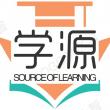
机械类专业英语应用教程(普通高等教育十三五规划教材)
全新正版 极速发货
¥ 28.5 7.7折 ¥ 37 全新
库存2件
浙江嘉兴
认证卖家担保交易快速发货售后保障
作者编者:马庆芬//刘培启
出版社机械工业
ISBN9787111538875
出版时间2017-01
装帧其他
开本其他
定价37元
货号3738425
上书时间2024-12-29
- 最新上架
商品详情
- 品相描述:全新
- 商品描述
-
目录
前言
Part 1 专业英语基础知识
Unit 1 专业英语的特点
1.1 概述
1.1.1 什么是专业英语?
1.1.2 学习专业英语的重要性
1.1.3 本书的主要内容及使用建议
1.2 词汇特点
1.2.1 词汇分类
1.2.2 词汇构成
1.2.3 词汇缩略
1.2.4 数词、公式和符号
1.3 语法特点
1.3.1 被动语态的广泛使用
1.3.2 非谓语形式的广泛使用
1.3.3 省略句使用频繁
1.3.4 It句型和祈使句使用频繁
1.3.5 复杂长句使用频繁
1.4 修辞特点
Unit 2 专业英语的理解与翻译
2.1 翻译的基本方式
2.2 典型语法现象的翻译
2.2.1 被动语态
2.2.2 不定式
2.2.3 分词
2.3 词汇的翻译
2.3.1 增译法
2.3.2 减译法
2.3.3 词义引申
2.3.4 词性转换
2.4 句子的翻译
2.4.1 定语从句
2.4.2 长句
2.4.3 否定句
Part 2 阅读理解
Unit 3 An Overview of Mechanical Engineering
3.1 Engineering and Main Branches
3.1.1 Definition of Engineering
3.1.2 Main Branches of Engineering
3.2 Mechanical Engineering and Fundamentals
3.2.1 History of Mechanical Engineering
3.2.2 Fields of Mechanical Engineering
3.2.3 Functions of Mechanical Engineering
3.2.4 The Future of Mechanical Engineering
3.3 Essential Qualities of Good Engineers
Unit 4 Mechanical Drawing
4.1 Engineering Drawing
4.2 Views
4.2.1 The Orthographic Projection
4.2.2 Multiple Views
4.2.3 Auxiliary Views
4.2.4 Sectional Views
4.3 Machine Drawings
4.3.1 Detail Drawings
4.3.2 Assembly Drawings
4.4 Auto CAD
Unit 5 Mechanics Foundations
5.1 Statics
5.1.1 Basic Terminologies
5.1.2 Important Principles
5.2 Mechanics of Material
5.2.1 Basic Terminologies
5.2.2 Important Principles
5.3 Fluid Mechanics and Applications
5.3.1 Basic Terminologies
5.3.2 Important Principles
5.3.3 Applications—Classical Hydraulic Machinery
5.4 Thermodynamics
5.4.1 Basic Terminologies
5.4.2 Important Principles
难句释义
Unit 6 Design of Machinery
6.1 The Design Process
6.2 Kinematic Fundamentals
6.2.1 Degrees of Freedom
6.2.2 Motions and Linkages
6.3 Practical Design Considerations of Cam
6.4 Gear Trains
6.5 Dynamics Fundamentals
难句释义
Unit 7 Design of Machine Elements
7.1 Failure of Elements
7.2 Shafts
7.2.1 Torsion and Bending Moment of a Shaft
7.2.2 Keys
7.2.3 Couplings
7.2.4 Materials Used for Shafting
机械类专业英语应用教程
7.3 Springs
7.3.1 Materials of Springs
7.3.2 Fatigue of Springs
7.4 Screws
7.4.1 Kinds of Threads
7.4.2 Methods of Manufacture
7.5 VBelts and Chains
7.5.1 VBelts
7.5.2 Roller Chains
7.6 Lubrication
7.6.1 Dry Friction
7.6.2 Boundary or ThinFilm Lubrication
7.6.3 Mixed or Semifluid Lubrication
7.7 Bearing
7.7.1 Bearing Materials
7.7.2 Ball Bearings
7.7.3 Roller Bearings
7.8 Gears
7.8.1 Materials for Gears
7.8.2 Lubrication and Mounting of Gears
7.8.3 The Failures of Gears
7.8.4 Other Gears
难句释义
Unit 8 Engineering Materials and Heat Treatment
8.1 Classification of Materials
8.1.1 Ferrous Metals
8.1.2 Nonmetallic Materials
8.1.3 Functional Materials
8.2 Mechanical Properties of Materials
8.3 Heat Treatment of Steels
8.3.1 Hardening
8.3.2 Tempering
8.3.3 Annealing and Case Hardening
难句释义
Unit 9 Manufacturing Technologies—Casting, Forming and Welding
9.1 Casting
9.1.1 Introduction
9.1.2 Materials of Patterns
9.1.3 Special Casting Processes
9.2 Forming
9.2.1 Hot Working and Cold Working
9.2.2 Basic Forming Processes
9.3 Welding
9.3.1 Fabrication Methods
9.3.2 Basic Welding Methods
难句释义
Unit 10 Manufacturing Technologies—Metal Cutting and Machine Tools
10.1 Lathes
10.1.1 Operations Performed in a Centre Lathe
10.1.2 SpecialPurpose Lathes
10.2 Reciprocating Machine Tools
10.2.1 Shaper
10.2.2 Planer
10.2.3 Slotter
10.3 Milling Machines and Milling
10.3.1 Types of Milling Machines
10.3.2 Milling Operation
10.4 Hole Making Operations
10.4.1 Drilling
10.4.2 Reaming
10.4.3 Boring
10.4.4 Tapping
10.5 Grinding and Abrasive Processes
10.5.1 Types of Grinding
10.5.2 Basic Abrasive Processes
10.6 Sawing and Broaching
10.6.1 Sawing
10.6.2 Broaching
难句释义
Unit 11 Robots
11.1 Introduction to Robots
11.1.1 History
11.1.2 Definition
11.1.3 Usages
11.2 Robot Classifications
11.2.1 Classification by Application
11.2.2 Classification by Coordinate System
11.2.3 Classification by Actuation
11.2.4 Classification by Control Method
11.2.5 Classification by Programming Method
11.3 Sensors
11.3.1 Internal Sensors
11.3.2 External Sensors
11.3.3 Vision System
11.3.4 Sensor Selection
难句释义
Part 3 口语训练和团队合作
Unit 12 英语面试常用表达
12.1 英语面试过程及注意要点
12.1.1 典型英语面试过程简介
12.1.2 英语面试注意要点
12.2 英语自我介绍
12.2.1 内容和要求
12.2.2 范例解析
12.3 英语面试常用表达
12.3.1 常用对话示例
12.3.2 常用词汇
Unit 13 英文学术报告设计与国际学术会议交流用语
13.1 学术报告概述
13.1.1 学术报告与论文的区别
13.1.2 学术报告的类型
13.1.3 学术报告的基本要求
13.2 学术报告的资料搜集与整理
13.2.1 文献资料搜集的意义
13.2.2 文献资料搜集的要求
13.2.3 文献资料的类型
13.2.4 文献资料的检索
13.2.5 文献资料的整理与使用
13.3 学术报告的结构
13.3.1 学术报告结构设计要点
13.3.2 学术报告的一般结构
13.3.3 几种典型的学术报告主体结构
13.4 报告电子演示文稿设计要求
13.5 讲演前的准备与临场发挥
13.5.1 讲演前的准备
13.5.2 临场发挥
13.6 国际学术交流常用口语表达
13.6.1 学术会议主持人用语
13.6.2 学术演讲常用表达
Part 4 写作训练
Unit 14 英语科技论文写作技巧
14.1 英语科技论文概述
14.1.1 科技论文的概念和特点
14.1.2 科技论文的分类
14.2 篇前部分的写作
14.2.1 论文题名
14.2.2 署名、工作单位及通讯地址
14.2.3 摘要
14.2.4 关键词
14.3 主体部分的写作
14.3.1 引言
14.3.2 正文
14.3.4 结论
14.4 篇尾部分的写作
14.4.1 致谢
14.4.2 参考文献
Unit 15 其他英文应用文体写作
15.1 信函
15.2 便笺和通知
15.3 简历15.3.1 格式和组成
15.3.2 写作要点
15.4 说明书
15.5 合同与协议书
附录
附录一 Words and Expressions
附录二 国际机械工程相关学术组织中英(外)文名称对照(部分)
附录三 机械工程相关学术会议(部分)
参考文献
内容摘要
由马庆芬、刘培启主编的《机械类专业英语应用教程(普通高等教育十三五规划教材)》的目的是使读者掌握机械类专业英语的基本知识、主要学习方法和技巧,培养和提高读者阅读、翻译专业英语文献资料及综合运用专业英语的能力。本书设置了理论和实践两个环节,可满足学生为主体的课堂设计和情景教学。本书的主要内容包括16章,分为四部分:基础知识、阅读理解、口语训练和团队合作以及写作训练,不仅提供了机械制图、机械设计、机械制造等多种机械类专业知识的阅读素材、配备了难句解析和专业词汇释义,还详解了专业英语应用中涉及到的阅读、翻译、口语、写作等方面的方法与技巧。
本书可作为机械类专业及各种机械相关专业的专业英语教材,也可以供机械工程相关领域的工程技术人员参考使用。
— 没有更多了 —












以下为对购买帮助不大的评价